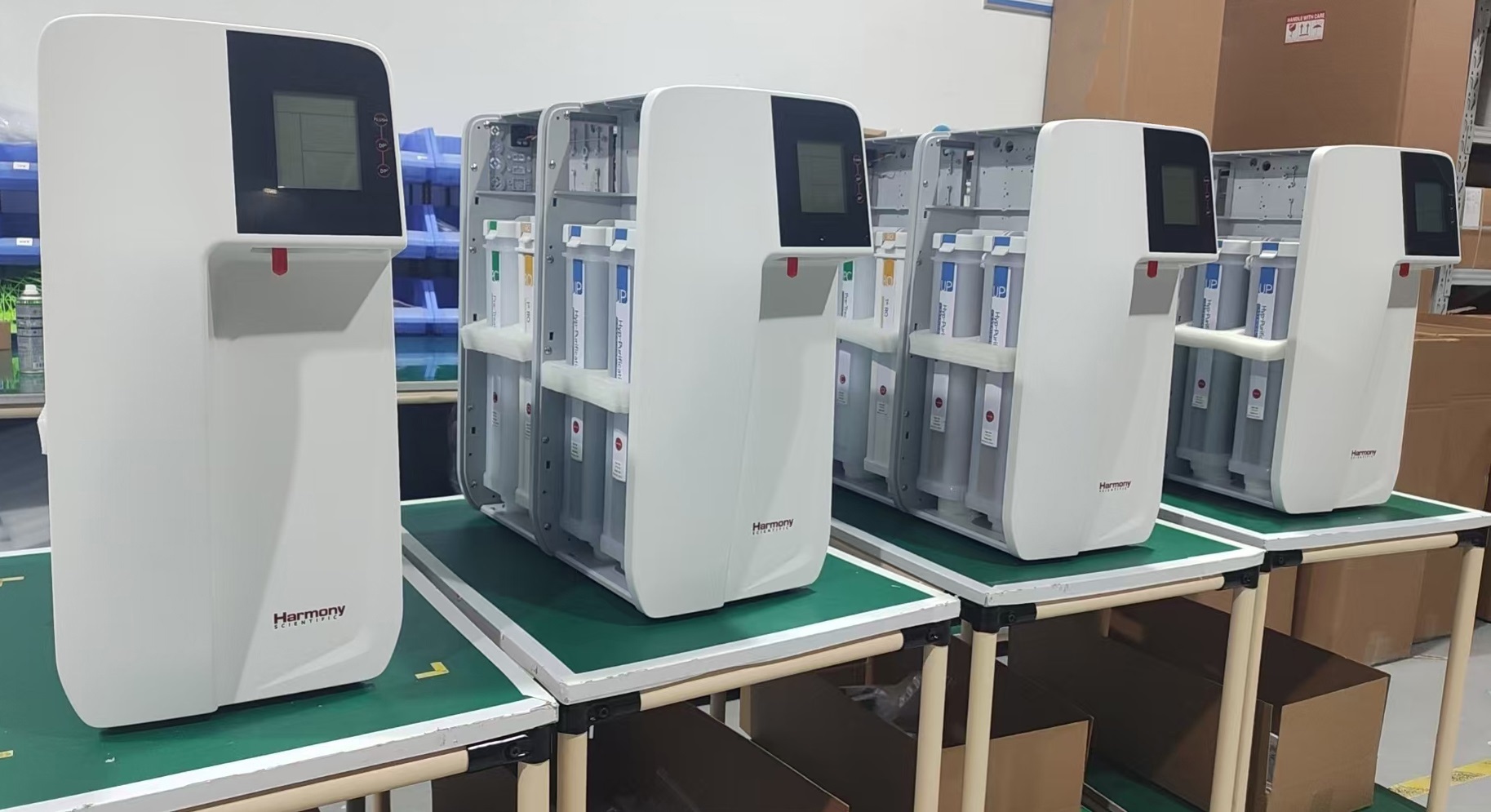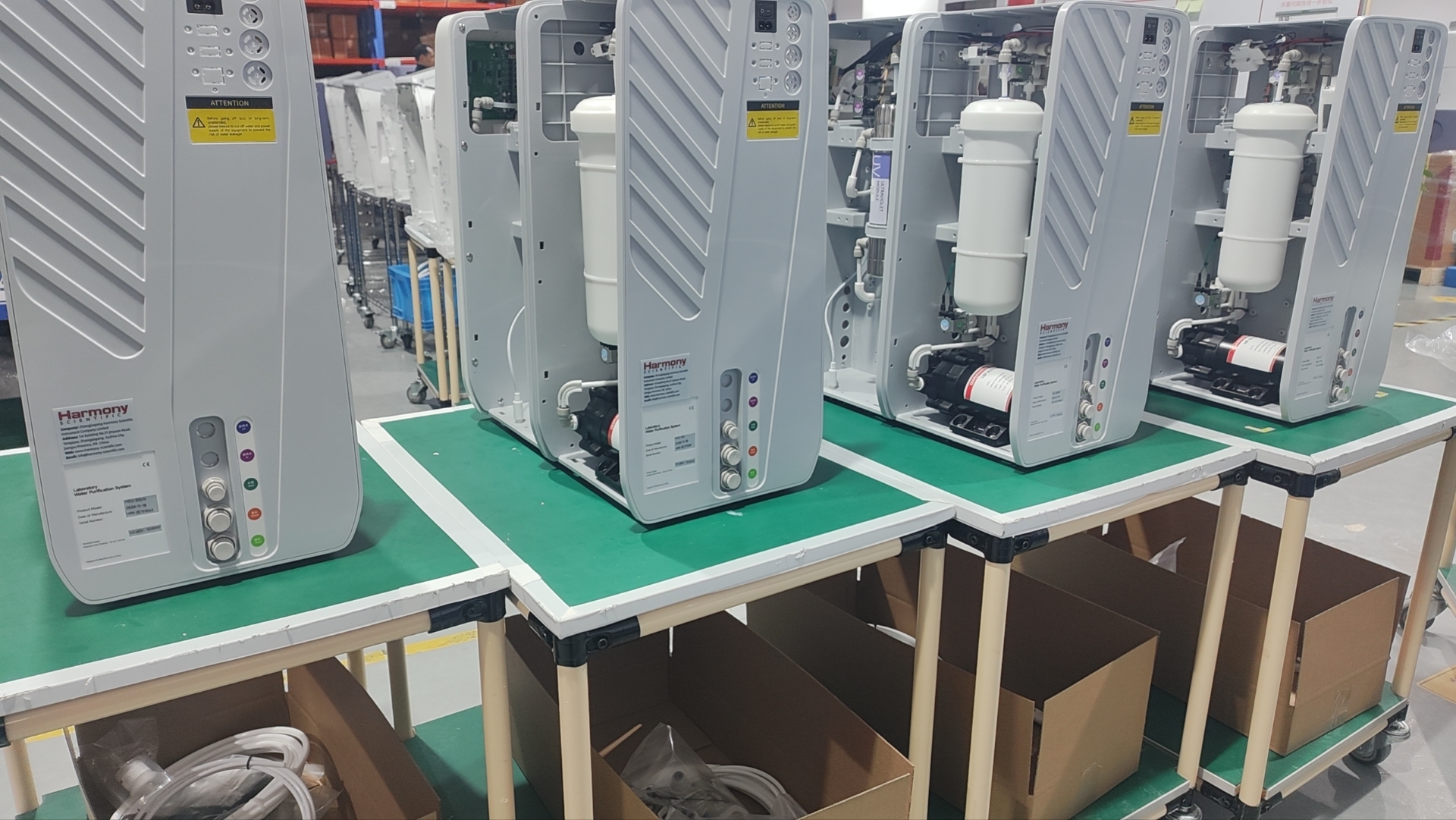Application Case of Ultra-pure Water in Laboratory
In a state-of-the-art pharmaceutical research laboratory, ultra-pure water is an indispensable asset, serving a multitude of critical functions across diverse research and analytical domains.
In high-performance liquid chromatography (HPLC), ultra-pure water is a fundamental component of the mobile phase. Its extremely low impurity levels are crucial for achieving accurate and reproducible separations of complex mixtures of pharmaceutical compounds. Even trace amounts of contaminants in the water can lead to baseline noise, peak tailing, or inaccurate retention times, thereby compromising the integrity of the analytical results. With the use of ultra-pure water, the laboratory can precisely control the elution profile and detect minute quantities of drug substances and their impurities, ensuring the quality and safety of pharmaceutical products.
For graphite furnace atomic absorption spectrometry (GFAAS), ultra-pure water is essential for sample preparation and dilution. The technique is highly sensitive and requires a water source free from metal ions that could interfere with the accurate determination of trace elements in pharmaceutical samples. Ultra-pure water helps to minimize background absorption and enhance the signal-to-noise ratio, enabling precise quantification of elements such as lead, cadmium, and mercury, which are of great concern in drug safety and quality control due to their potential toxicity.
In gas chromatography (GC), ultra-pure water is used in the preparation of aqueous samples and calibration standards. It ensures that no impurities are introduced that could affect the separation and detection of volatile organic compounds and other analytes. The absence of organic contaminants and dissolved gases in the water is vital for obtaining sharp and well-resolved chromatographic peaks, allowing for reliable identification and quantification of substances such as residual solvents in pharmaceuticals or volatile impurities in drug formulations.
In the realm of drug formulation development, ultra-pure water is the cornerstone for dissolving and diluting active pharmaceutical ingredients (APIs) with the highest precision. Its ultra-low levels of endotoxins and particulate matter are essential to ensure the stability and efficacy of the formulated drugs. For example, in the preparation of injectable medications, where even the slightest impurity could trigger adverse reactions in patients, the use of ultra-pure water guarantees the safety and potency of the final product.
In advanced spectroscopic techniques such as nuclear magnetic resonance (NMR) spectroscopy, the purity of the solvent, which is predominantly ultra-pure water, directly impacts the resolution and accuracy of the spectral data. The absence of dissolved salts, organics, and trace metals in the water allows for clear and detailed analysis of molecular structures, facilitating the identification and characterization of novel drug candidates and their metabolites.
When it comes to cell culture studies, which are fundamental in drug discovery and toxicity testing, ultra-pure water is used for preparing cell culture media and buffers. Its sterility and lack of bioactive contaminants create an ideal environment for the growth and maintenance of sensitive cell lines. This enables researchers to accurately observe cell behavior, proliferation, and response to potential drug compounds, thereby providing valuable insights into the pharmacological effects and potential side effects of new drugs.
Furthermore, in genomics and proteomics research, ultra-pure water is essential for DNA and RNA extraction procedures. It helps in obtaining high-quality genetic material free from enzymatic inhibitors and other contaminants that could compromise downstream applications such as polymerase chain reaction (PCR) and gene sequencing. In proteomics, it is used in sample preparation and chromatography techniques to ensure the accurate separation and identification of proteins, which is crucial for understanding disease mechanisms and developing targeted therapies.
The laboratory's investment in a high-quality ultra-pure water system has not only enhanced the reliability and reproducibility of their research results but has also accelerated the pace of drug development and innovation. By providing a consistent and ultra-pure water source, it has become an enabling factor in the pursuit of breakthroughs in pharmaceutical science and the discovery of life-saving medications.







-
ACHEMA 2024 June 10-14 Frankfurt Germany
Innovation Themes
The ACHEMA Innovation Themes take you on a deep-dive into key areas driving innovation in process industries. Each innovation theme brings you dedicated live stages, a scientific conference and visionary highlight sessions from the process industries.넶24 2024-03-21 -
CMEF 2024 April 11-14 Shanghai China
The China International Medical Equipment Fair (CMEF) is a world leading medical and health technology platform, provides a comprehensive display of technological advancements and solutions from across the entire medical industry chain.
넶63 2024-03-21 -
Analytica 2024 April 9-12 Munich Germany
World’s leading trade fair for laboratory technology, analysis, biotechnology and analytica conference
넶34 2024-03-21









